|
|
|
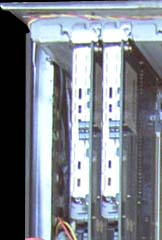
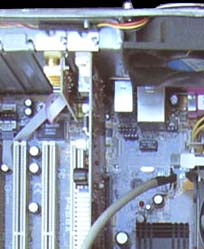
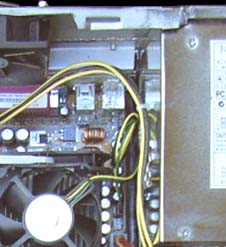
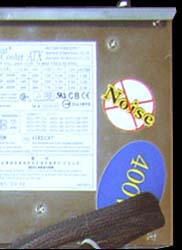
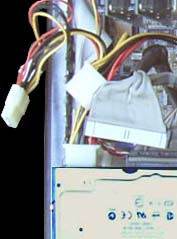
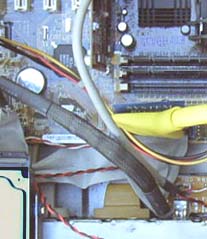
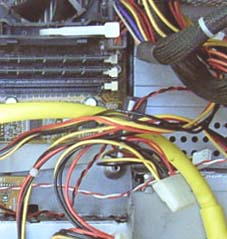
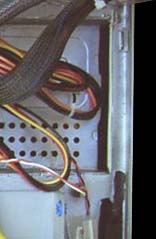

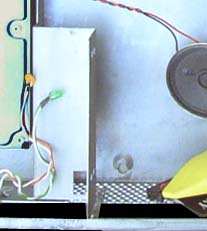
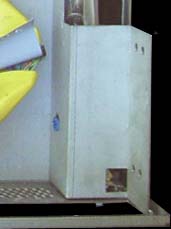
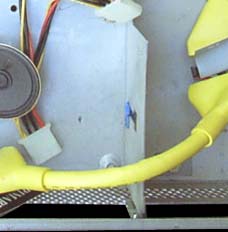
| Inside View: Top left: the 2 VisionPlus PCI tuner cards, to the right of them the header for the SPdif. The Radeon 9200 Grfx card, the Intel P4 2.8MHz CPU, 2 strips of 512 DDR (one strip is enough) and the TruePower 400 watt PSU at 12dBA low noise. Just to the bottom of the PSU in the photo is the well for the floppy drive. Then bellow that again the metalwork for the HDDs, note the blue suspension grommets in the 3½" bay. On top of the 3½" bay is a 5¼" bay for the right hand removable HDD caddy. To the left of that bay is the area for the DVD burner; which is mounted in its own metalwork and locked into the box base by 2 catchs and a screew that can be seen at the front floor and just above the speaker. The removal of the DVD section allows access to the 4 inside mounting screws of the 2 HDD caddies so they can be tightened. Finaly in the lower left corner the C:\ Drive in place and room above for the other HDD removable caddy. The MoBo is an Ausu P4S8X, but any board with SPdif will do. |
 |
| Front View: The box is an old Intergraph, but any rack-mount server box would do*, with the removable caddies and the DVD player-burner. The keyboard slips neatly under the overhang and is hardly noticable when pushed in. The front of the PC is only 100mm high and looks in keeping with the other AV equipment on the same shelf. (*The rack-mount server box is wide enough across to take three 5¼" bays .) |
 |
|
Side View: The keyboard in the 'Out' position and the floppy drive. The area of full height can be seen in the background. The white thing under the floppy drive is a supporting leg for the extra weight of the PSU. |
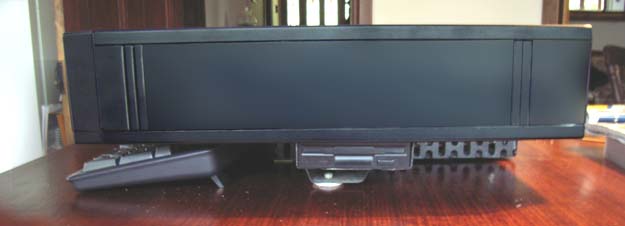 |
| Side View: The keyboard in the 'In' possition. |
 |
| Rear View: Easy to see the full height section it's the same area as the motherboard. While the PSU sits in the floor of the original Intergraph box the area for the motherboard has been lowered. |
|
Building Hints: Us the quietest products you can find, mount the hard-drives in rubber grommets. If you need fans use the minimum number and for the ones you have to use, get the biggest slowest turning - high volume, low velocity. They can also be slowed down by inserting reverse bios diodes in the fan's power lead (8 will reduce the speed by half). Always use more than one hard-drive. When working with large video files it's much faster to read from a different drive to the one you are writing to. Make the non C:\ drive the holding area for your files so when it come to defragging you don't have to. Just wait untill you only have a few files in holding then move them to another drive and reformat your holding drive then dump the files back. Moving the files and fast formatting will take about 8 minutes for 20GB, wlile defragging 20GB will take at least 40 minutes. Software: OS: WinXP Pro + SP1 |